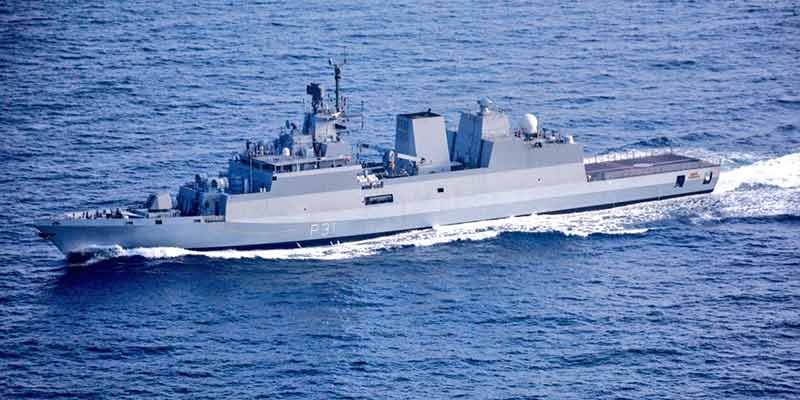- India
- Oct 22
- Mathew Gregory
ASW corvette Kavaratti to be commissioned
The last of four indigenously built Anti-Submarine Warfare (ASW) stealth corvettes “INS Kavaratti” under Project 28 (Kamorta class) is scheduled to be commissioned into the Indian Navy by General Manoj Mukund Naravane, PVSM, AVSM, SM, VSM, ADC, Chief of the Army Staff at Naval Dockyard, Visakhapatnam on Thursday, 22 October 20.
Salient Features
• Touted as a potent Stealth ASW Corvette, Kavaratti is indigenously designed by the Indian Navy's in-house organisation, Directorate of Naval Design(DND), and built by Garden Reach Shipbuilders & Engineers (GRSE), Kolkata.
• The ship has up to 90% indigenous content and the use of carbon composites for the superstructure resulting in lower top weight and maintenance costs and improved stealth features. It is a commendable feat achieved in Indian shipbuilding.
• The ship is 109 metres long and 12.8 metres broad and is highly maneuverable with a top speed of 25 knots.
• It has a displacement of 3,300 tons and a range of about 3,450 nautical miles at 18 knots powered by 4 diesel engines that generate a combined power of 3000 kW and propelled by a main unit of four 3,888 kW diesel engines at 1,050 rpm.
• Kavaratti is to be armed with a range of indigenously developed cutting-edge weapons and sensors, including "a medium-range gun, torpedo tube launchers, rocket launchers and a close-in weapon system".
• It has a state-of-the-art weapons and sensor suite capable of detecting and prosecuting submarines.
• In addition to its anti-submarine warfare capability, the ship also has a credible self defence capability and good endurance for long-range deployments.
• The ship will also contain an integrated communication system and an electronic warfare system.
• Ship will be commissioned into the Navy as a combat-ready platform as the ship has completed sea trials of all the systems fitted onboard.
• Kavaratti takes her name from erstwhile INS Kavaratti which was an Arnala class missile corvette. The older Kavaratti distinguished herself by operating in support of was Bangladesh's liberation in 1971.
(The author is a trainer for Civil Services aspirants. The views expressed here are personal.)

